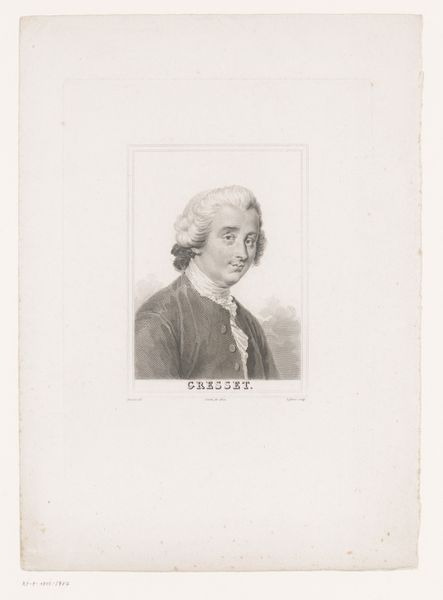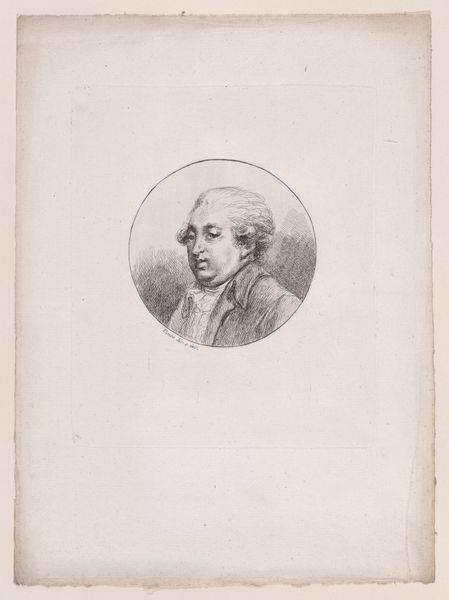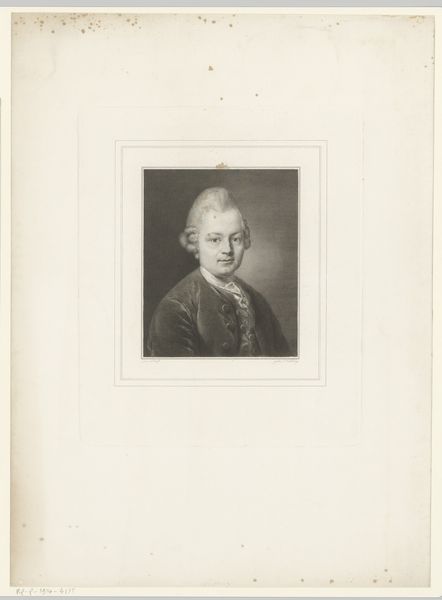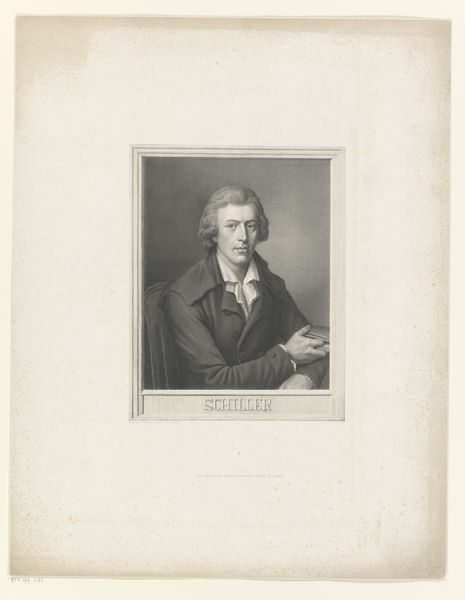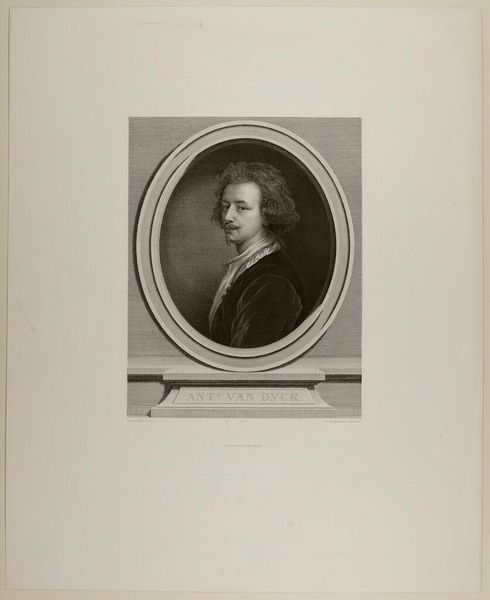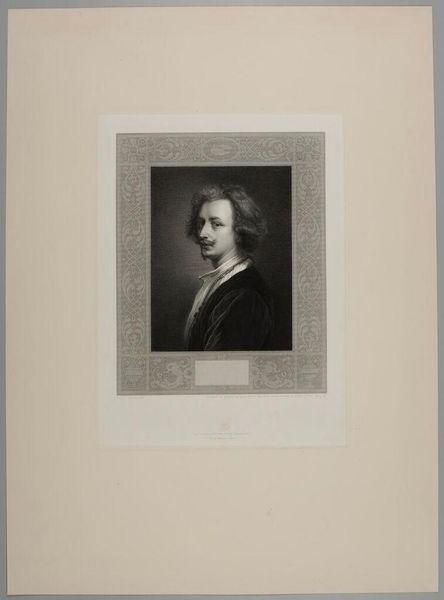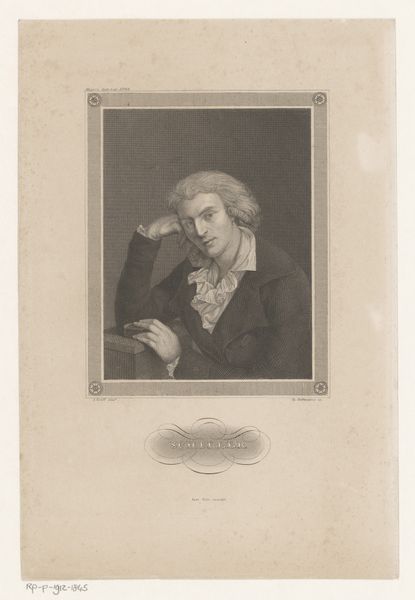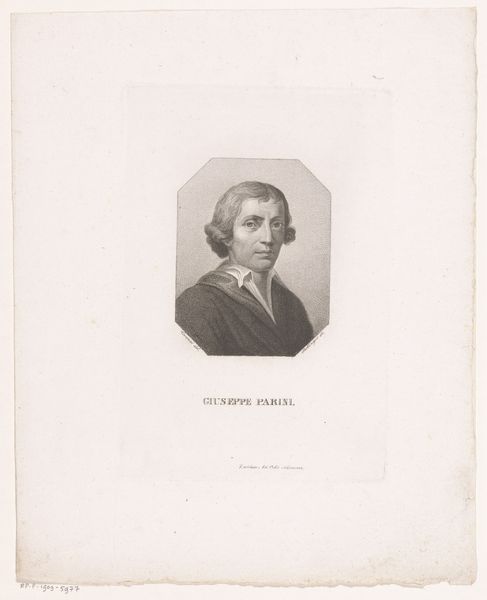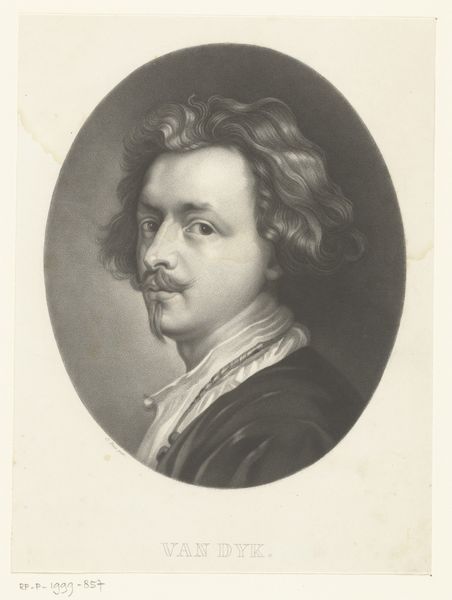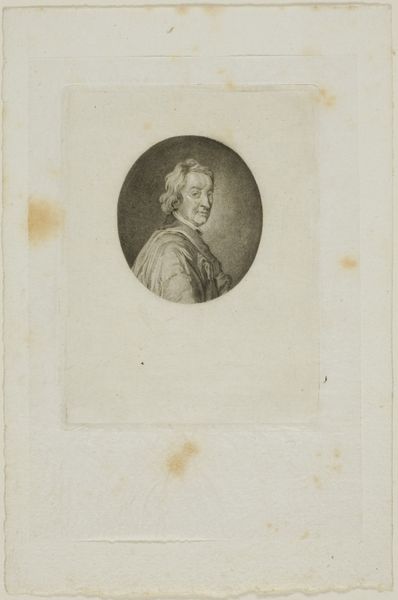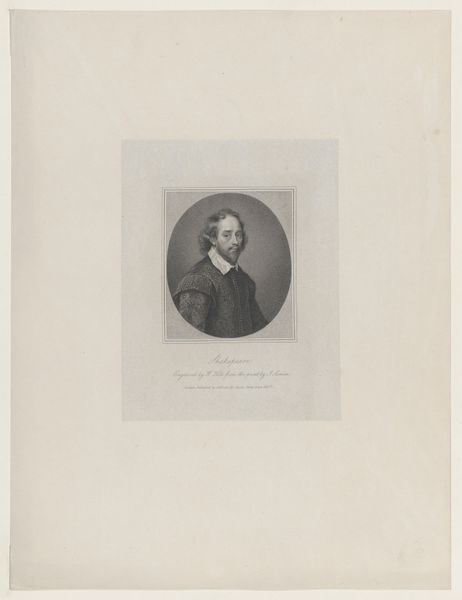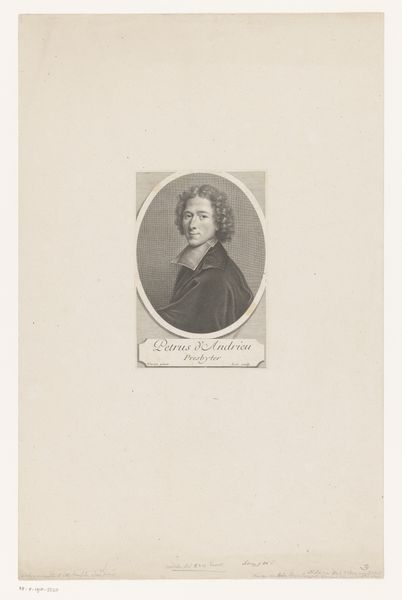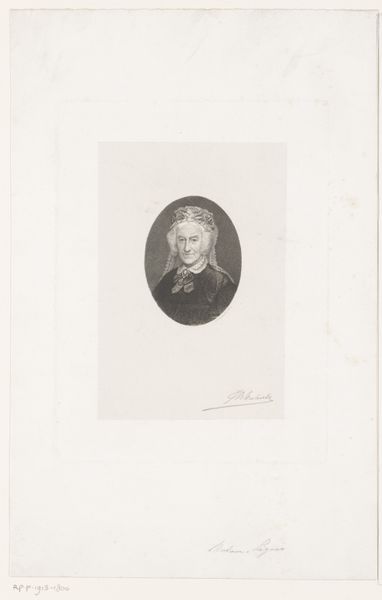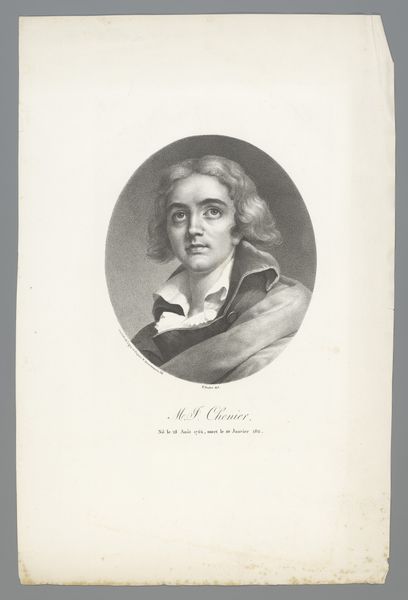
Dimensions: height 314 mm, width 233 mm
Copyright: Rijks Museum: Open Domain
Jacques Etienne Pannier created this portrait of Anthony van Dyck using lithography. The oval frame around van Dyck presents him as a classic icon, a way to immortalize the sitter that dates back to antiquity. Van Dyck's assured gaze and refined attire speak to his status as a celebrated artist. Yet, it's the loosely tied scarf that captures my attention. This seemingly simple accessory echoes through art history; a similar motif appears in portraits of poets, philosophers, and even depictions of Christ. The draped cloth can be traced back to classical antiquity, often signifying freedom and intellectual pursuit. Over time, it has become a signifier of creative genius. Consider, for example, how the motif appears in Rembrandt’s self-portraits. What is it about the draped scarf that resonates so deeply? Perhaps it suggests a mind unbound by convention. The recurring appearance of the scarf highlights our collective fascination with the artist. It is a visual shorthand for creativity that has resurfaced, evolved, and taken on new meanings across different times.
Comments
No comments
Be the first to comment and join the conversation on the ultimate creative platform.
